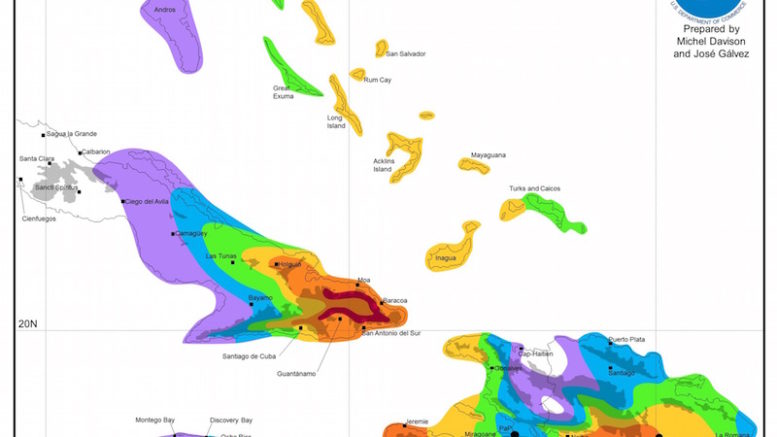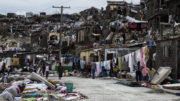Before Hurricane Matthew hit the coast of Haiti in early October, the storm formed from a tropical wave that pushed off the African coast, just southwest of the Cape Verde Islands, in late September. The wave moved westward in the Atlantic Ocean, towards Central America and curved back up towards the Caribbean Islands. According to The Weather Channel, it was predicted that the system would take a few days to organize as it moved closer to the east coast of the Americas, potentially causing a period of life-threatening conditions in parts of Haiti, Cuba, and Jamaica.
Once the system reached the Windward Islands, it was sufficient enough to be dubbed Tropical Storm Matthew, but once it reached the eastern Caribbean it severely intensified and became a Category 5 hurricane, with winds up to 160 mph. It was predicted that the hurricane would hit Haiti first, along with other neighboring Caribbean countries. Then the storm would move up the coast of Florida and into the Carolinas and Georgia.
Unfortunately, some areas were not able to weather the storm as well as others due to lack of preparation and lack of resources due to poverty. In Haiti, for example, their national government regularly ranks among the world’s least effective and has invested little in disaster preparation. In fact, in the days leading up to the storm many of the Haitian people were unaware of the coming disaster and were therefore unable to prepare. After the storm the government even failed to provide food and water, according to Time Magazine.
Haiti, being the poorest country in the northern hemisphere with over 2 million people living in extreme poverty, lacked the resources to prepare for the storm, including adequate shelter to withstand the extreme winds.
Cuba was much more prepared, as they have a mandatory hurricane drill every May in advance of hurricane season. The people of Cuba were warned to take cover, and while hundred of homes were destroyed few deaths were reported.
In the United States, more than two million people were ordered to evacuate ahead of the arrival of Matthew. The Governor of Florida declared the storm a State of Emergency. President Obama addressed the nation, encouraging the American people to listen to the evacuation warning. Florida ordered about 1.5 million people to leave the coast while South Carolina called for 500,000 evacuations. Many measures were taken to protect the people from the oncoming brute force of the storm. Since the hurricane was expected to have a long term path on land, long-range forecasting was imprecise. Therefore, the United States government evacuated as many people as possible. The hurricane center reported to CNN “When a hurricane is forecast to take a track roughly parallel to a coastline, as Matthew is forecast to do … it becomes very difficult to estimate impacts this far in advance.” Although the direct path was hard to predict, necessary precautions were taken.
Addressing the gap between the damage brought on by extreme weather events in wealthy and underdeveloped countries was a key point in the Paris Agreements last year. The deaths brought on by Hurricane Matthew were devastating, and would have been avoidable if not for this gap and the lack of mobilization for storm safety within developing countries.


